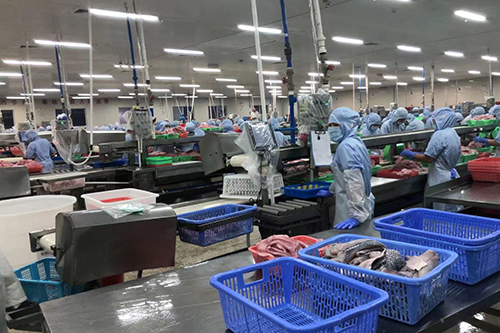When I think about frozen tilapia fillets, I’m reminded of how they go from water to my plate. Each step in the process is crucial for ensuring quality and freshness.
creating frozen tilapia fillets involves several key steps: bleeding, filleting, skinning, trimming, deboning, grading, cleaning, freezing, glazing, and packaging. Each step is designed to maintain the fish’s quality and ensure it is safe for consumption.
Let’s dive into the details of this fascinating journey.
What Steps Are Involved in Processing Frozen Tilapia Fillets?
Understanding the steps can help you appreciate the care that goes into each fillet.
Processing frozen tilapia fillets involves a sequence of carefully controlled steps, starting with bleeding the fish to ensure freshness, then moving through filleting, skinning, trimming, and deboning, then cleaning, freezing, glazing, and finally packaging. Each step contributes to a high-quality product that retains its flavor and texture.
Detailed Steps in Processing Frozen Tilapia Fillets
Let’s explore each step in more depth. It’s interesting how much goes into ensuring the fish you eat is excellent and plentiful.
1. Bleeding the Fish
This first step is crucial. By cutting the gills, we allow the fish to bleed out. This ensures that the meat remains firm and retains its quality. It’s all about that fresh taste!
2. Filleting
Next, skilled workers carefully cut the fish into fillets. This requires precision to ensure the meat is cut cleanly without leaving any bones behind.
3. Skinning
Once filleted, the skin is removed meticulously to avoid wasting any of the precious meat. Skin removal is not just about aesthetics; it affects the texture and cooking properties of the fish.
4. Trimming
Now, any excess fat or unwanted parts are trimmed away. This step ensures that the fillets are uniform in size and quality, essential for cooking evenly.
5. Deboning
Fillets are then checked for any remaining bones. This is critical for ensuring a pleasant eating experience, especially for families and kids.
6. Grading
The fillets are graded by size and quality. This helps maintain consistency in packaging so customers know what to expect when they buy our products.
7. Cleaning
Before freezing, the fillets are thoroughly cleaned. This step removes any remaining blood or impurities, ensuring a fresh product.
8. Freezing
Here comes the part that locks in freshness. The fillets are quickly frozen to preserve their taste and texture. Quick freezing is essential to prevent the formation of ice crystals, which can ruin the meat.
9. Glazing
After freezing, the fillets are often glazed with a thin layer of ice. This acts as a protective barrier against freezer burn and helps maintain moisture during storage.
10. Packaging
Finally, the fillets are carefully packaged for distribution. The packaging is designed to keep the fillets safe during transport while remaining fresh until they reach the consumer.
Visual Summary of the Processing Steps
| Step | Description |
|---|---|
| Bleeding | Ensures freshness by draining blood. |
| Filleting | Cutting fish into fillets without bones. |
| Skinning | Removing skin to improve texture. |
| Trimming | Eliminating excess fat and unwanted parts. |
| Deboning | Ensuring no bones remain in the fillets. |
| Grading | Sorting by size and quality for consistency. |
| Cleaning | Removing impurities for a clean product. |
| Freezing | Rapidly freezing to lock in freshness. |
| Glazing | Adding a protective ice layer. |
| Packaging | Safely packaging for transport and storage. |
The Importance of Each Step
Each step in this process is vital. From bleeding to glazing, every action is designed to maintain the quality of the tilapia fillets. It’s a meticulous dance of skill and science, ensuring you get not just fish but quality fish that you can feel good about serving.
Conclusion
The journey of frozen tilapia fillets is a testament to the dedication and craftsmanship of those in the industry. By understanding this process, we can appreciate the quality that goes into every meal. Each fillet tells a story of care, quality, and passion for seafood.



